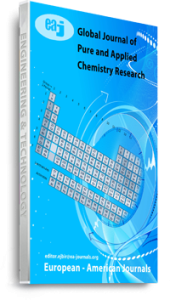Analytical techniques such as X – Ray Fluorescence Spectroscopy (XRF) and Atomic Absorption Spectroscopy (AAS) coupled with statistical package for multivariate analyses were employed to characterize silica sand deposit obtained from River Katsin-Ala in Benue State, North Central Region of Nigeria. The results of analyses reveal that silicon dioxide (SiO2) forms the predominant metal oxide in the entire samples with a percentage mean concentration of 95.904 ± 0.2539%, followed by (Fe2O3; 0.3856 ± 0.0406%), (MnO;0.1170 ± 0.0085%), (PbO;00.0714± 0.0027%),(TiO2;0.0420± 0.0019%), (BaO;0.0344 ± 0.0033%), (P2O5; 0.0360± 0.0062%) (NiO; 0.0280± 0.0178%),(Na2O;0.0109 ± 0.0012%), (K2O;0.0146 ± 0.0017%),and trace amounts of CaO, MgO,Al2O3, ZnO and CuO. Further beneficiation( using acid leaching method) of the silica sand samples reveal an increased silica (SiO2) content from 95.904 ± 0.2539% to 97.850 ± 0.0.1052% with a corresponding decrease in Fe2O3 content (0.3856 ± 0.0406% to 0.0530 ± 0.0035% across samples. Physico-chemical analysis shows a moderate pH value of 7.03 signifying high basic oxides content in the silica sand samples. Acid Demand Value (ADV) test reveals a moderately low ADV in samples of 15.14, signifying the presence of low soluble carbonates in the silica sand samples. Grain size distribution analysis reveals that a high percentage of the samples grains size distribution fraction are within the recommended screen sizes (40-100 mesh). Heavy liquid separation test reveals a significant trace amount of principal minerals such as ilminite, magnetite, mica, calcite and kaolinite. A correlation between the mean values of SiO2 and Fe2O3 in all the samples reveals a direct relationship between SiO2 and Fe2O3 which implies that as the values of SiO2 increases that of Fe2O3 also increases and vice versa Furthermore, comparison of observed mean of SiO2, Fe2O3, CaO, Al2O3 and TiO2 with their observed minimum standard (95.00%; 0.005%; 0.1000% and 0.0120%) shows that the silica sand samples from River Benue can be used as a source of SiO2 for glass making.
Keywords: Acid demand values., Beneficiation, Glass sand; Silica sand, Grain size, Metal Oxides

